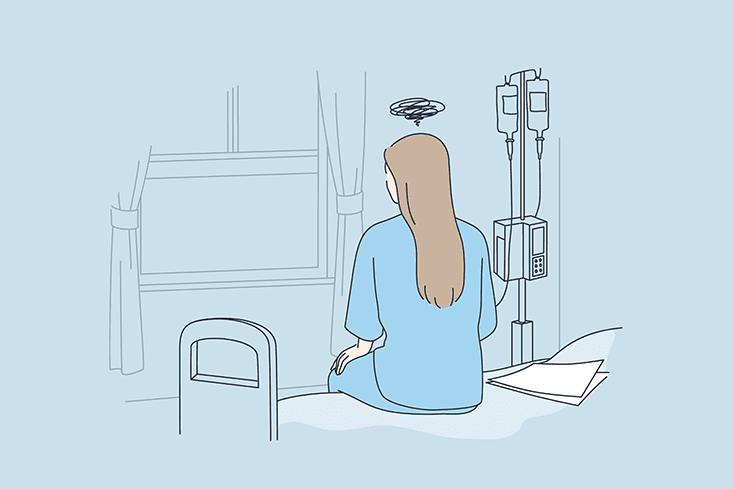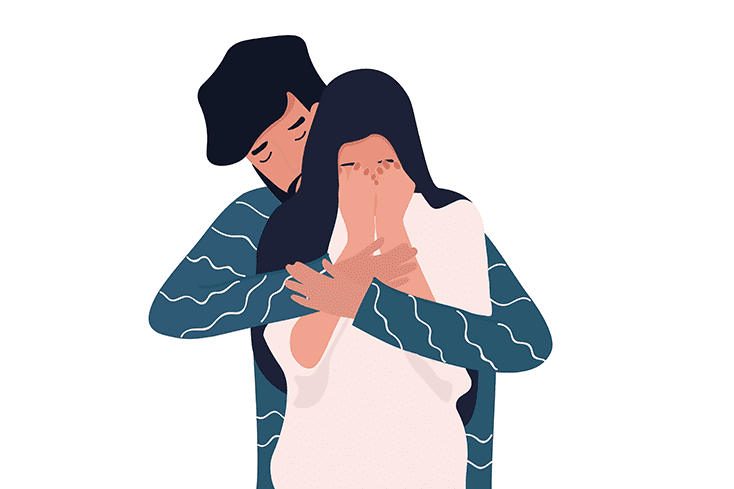如何向不理解的人描述邊緣性人格障礙 | How to Describe Borderline Personality Disorder to Those Who Don’t Understand
MHACC 雙語部落格 Bilingual Blog
Scroll down for the English Version ⬇️
作者:Ashley Nestler
2021年10月29日
邊緣性人格障礙(BPD)是一種嚴重的心理健康狀況,其特徵包括情緒頻繁波動、不穩定的自我形象,以及激烈且失衡的人際關係。儘管此障礙的基本描述與診斷過程看起來相對簡單,但實際的生活經驗卻要複雜得多。
邊緣性人格障礙有九項診斷標準,但此障礙的表現方式有許多變化。這表示每個人的經歷都是獨特的,且很可能會有不同的表現形式。因此,BPD 是最常被誤解的心理疾病之一,這項診斷往往伴隨著負面的誤解,對患者的生活造成影響。這也是我被診斷後的親身體驗。
幫助他人,尤其是我們身邊親近的人,了解邊緣性人格障礙在日常生活中的實際情況,是一項艱鉅的任務。當我與家人和朋友溝通時,我學會了最重要的是盡我所能,真實地表達我的經歷。
坦誠地表達,是我(也希望是其他人)推動對邊緣性人格障礙理解與同理的方式。
提供關於此障礙的具體資訊
為了向不熟悉 BPD 的人描述我的經歷,我首先會列出九項診斷標準:
• 極力避免真實或想像中的被遺棄
• 不穩定且激烈的人際關係模式,常見理想化與貶低交替出現
• 不穩定的自我形象或自我感
• 可能對自己有害的衝動行為(例如魯莽駕駛或暴食)
• 重複性的自殺行為或威脅
• 因情緒高度反應而產生的情感不穩定(如短時間內強烈的憂鬱、易怒或焦慮,通常只持續幾小時,很少超過幾天)
• 慢性空虛感
• 難以控制憤怒
• 壓力引起的妄想或嚴重的解離症狀
然而,儘管提供診斷標準是讓人初步了解此障礙的好方式,別人仍可能難以完全理解這些症狀,或將其與你的個人經歷連結。因此,我會盡量以自己實際經歷的症狀為主,用更容易理解的方式表達出來。
聚焦於個人影響
我的經驗讓我了解到,大多數人在談到心理疾病時,其實不了解這些症狀有多嚴重、甚至多具破壞性,也不了解我們需要多大的努力去面對這些症狀。但他們通常比較能理解身體上的創傷與症狀有多嚴重。
例如,我會告訴他人,我的強烈情緒與情緒波動常常會帶來身體上的痛苦。當我感到心碎時,那感覺就像全身受傷一樣,思緒也變得混亂,這常常導致衝動行為。在這樣的情況下,我的行為可能看起來像是在操縱他人,但實際上那來自於我正在經歷極度的情緒痛苦。
我發現,當我將自己的心理症狀比喻成他人能理解的身體症狀時,對方更能理解我內在的感受與這些症狀的嚴重性。這樣的溝通方式不但提高了他人給予我肯定的可能性,也促進了彼此間的連結與同理心的產生。
分享正面面向
很遺憾地,我在面對這段歷程時發現,BPD 經常在媒體與大眾文化中被負面描繪。這些症狀常被用作情節工具或聳動標題,以激起恐懼,進而加深對此障礙的污名與壓迫。
雖然在公開對話中坦誠面對此障礙的困難面向很重要,我同時也會努力分享它的正面之處。例如,患有 BPD 的人常常對情緒的感受比他人強烈,這代表我們也能更深刻地體會愛、快樂與興奮,這讓我們的人際關係往往更加充實與激烈。我們常能與他人建立強烈的連結,雖然這些關係有時可能會變得不穩定,但也往往非常深刻且有意義。
從我的症狀中找出正面面向,不但幫助我向身邊親人解釋這個狀況,也幫助我更了解自己,並釋放我對自己這個診斷的批判。許多患有 BPD 的人是我所認識中最有同理心、最能理解他人的人,我們都應該被理解,而不是因為這個疾病所帶來的污名而被評判。
我希望人們能以更正面的角度看待邊緣性人格障礙,也希望患有這個障礙的人能更輕鬆地與親人分享自己的經歷。
最終,患有 BPD 的人應該被他人完整地理解——而不只是被視為一個診斷標籤。
Ashley Nestler,MSW,是思覺情感障礙、安靜型邊緣性人格障礙、纖維肌痛症、多種飲食障礙、廣泛性焦慮障礙、強迫症與複雜性創傷後壓力症候群的生還者。她是一位心理健康專家、作家與賦能教練。
Written by: Ashley Nestler
Original Source Here: https://www.nami.org/borderline-personality-disorder/how-to-describe-borderline-personality-disorder-to-those-who-dont-understand/
October 29 2021
Borderline personality disorder (BPD) is a severe mental health condition marked by frequent mood changes, an unstable self-image, and intense and unbalanced relationships. While the disorder’s basic description and diagnostic process seem straightforward enough, the lived experience of the disorder is far more complex.
While there are nine criteria for diagnosing BPD, there are many variations of the disorder. This means that each person’s experience is unique and is likely to present quite differently. Unsurprisingly, then, BPD is one of the most misunderstood mental illnesses, and the diagnosis is often accompanied by misconceptions that negatively impact the lives of people who have the disorder. This has been my experience since being diagnosed.
Helping others, particularly those close to us, understand the day-to-day realities of borderline personality disorder can be a daunting task. As I have navigated conversations with family and friends, I’ve learned that what matters most is speaking my truth to the best of my ability.
Speaking out is how I — and, hopefully, others — can promote understanding and, subsequently, empathy for everyone impacted by borderline personality disorder.
Give Specific Information About the Disorder
In order to describe my experience with BPD to people who are unfamiliar with the disorder, I first list the nine diagnostic criteria:
- Extreme efforts to avoid real or imagined abandonment
- A pattern of unstable and intense relationships, often marked by alternating between idealization and devaluation
- An unstable self-image or sense of self
- Impulsivity in activities that are potentially self-damaging (like reckless driving or binge eating)
- Recurrent suicidal behavior or threats
- Affective instability due to a marked reactivity of mood (e.g., intense episodic dysphoria, irritability or anxiety usually lasting a few hours and only rarely more than a few days)
- Chronic feelings of emptiness
- Difficulty controlling anger
- Stress-related paranoid ideation or severe dissociative symptoms
However, while presenting someone with the criteria is an excellent way to introduce them to the basis of what the disorder is, it can be difficult for them to fully comprehend and relate the symptoms of BPD to your personal story. This is why I try to communicate the symptoms that I personally experience with BPD and translate them in ways that are more understandable.
Focus on the Personal Impact
My experience navigating conversations about mental illness have taught me that people generally do not understand how severe and debilitating symptoms can be — or how much work goes into addressing symptoms. They do, however, tend to understand severity of physical injuries and symptoms.
For example, I tell people that my intense emotions and mood swings often feel physically painful. When I am heartbroken, it feels as though I have full-body injuries, and I am unable to think clearly, which often leads to impulsive actions. In these circumstances, my actions may seem manipulative, but they often come from a place of experiencing intense emotional pain.
In likening my symptoms to physical symptoms that someone else can relate, I have found that I’m more likely to relay the in-body experience and severity of my symptoms. This approach provides a higher chance of validation, while also creating a connection and igniting empathy.
Share the Positives
Unfortunately, I have come to find in my journey that BPD is often portrayed negatively in the media and in popular culture. The symptoms of the disorder are often used as a plot device or in a headline to inspire fear, ultimately furthering stigma and oppression for those living with it.
While highlighting the difficulties of the disorder is important in an open conversation, I also prioritize sharing the positives. For example, individuals with BPD tend to feel emotions intensely (and more strongly than many of our peers), which means that we experience love, happiness and excitement to a higher degree, which often makes many of our relationships more exhilarating. We often experience intense connections, and while relationships certainly have the potential to become unstable, they are often deep and meaningful.
Finding the positives in my symptoms of borderline personality disorder has not only helped me explain the condition to my loved ones, but it has also helped me to better connect to myself and release the judgment I placed on myself for having this diagnosis. Those with BPD are often some of the most empathetic, understanding people that I know, and we all deserve to be understood rather than judged based on the stigma surrounding this illness.
My hope is that people will be able to see borderline personality disorder in a more positive light, and that people living with the disorder will be able to relay their experience more easily to their loved ones.
Ultimately, people with BPD deserve the understanding of others who can see the whole person — not just a diagnosis.
Ashley Nestler, MSW, is a survivor of schizoaffective disorder, quiet borderline personality disorder, fibromyalgia, multiple eating disorders, generalized anxiety disorder, obsessive compulsive disorder and Complex PTSD. She is a mental health specialist, author and empowerment coach.
Sign up for our Newsletter
訂閱每月簡訊獲得最新資訊
Contact Us












